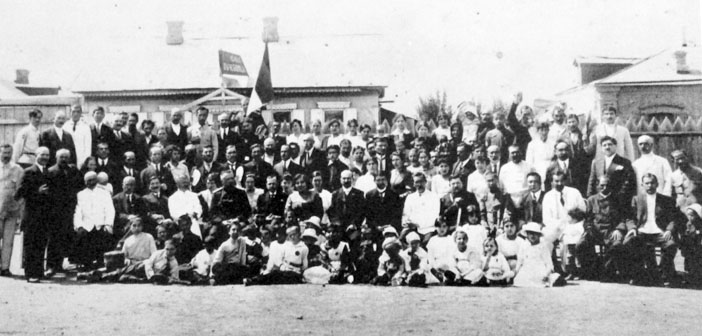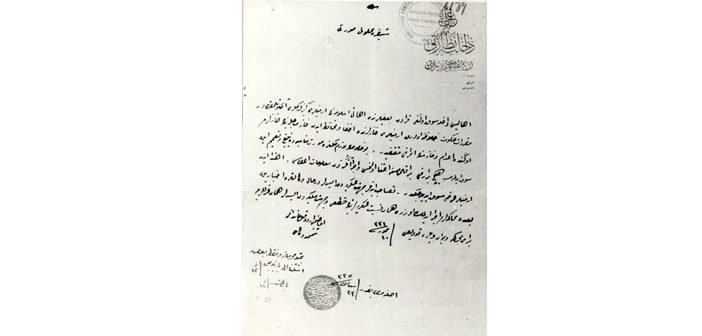Raymond Kévorkian attended “The Social, Cultural and Economic History of Van and the Region” conference organized by Hrant Dink Foundation. We talked to him about the course of genocide studies and his recent works.
Raymond
Kévorkian is one of the most knowledgeable
figures in the field of Armenian Genocide studies. Kévorkian is a
foreign member of the National Academy of Sciences Armenia and
carrying out his studies in University of Paris VIII:
Vincennes-Saint-Denis and Institut Français de Géopolitique. He
attended “The Social, Cultural and Economic History of Van and the
Region” conference organized by Hrant Dink Foundation. We talked to
him about the course of genocide studies and his recent works.
The centennial of the Armenian Genocide was a threshold that everybody had been waiting. Now that it has been crossed, what is the current focus of genocide studies?
The problem of genocide is still on the table. I observed that the issue of compensation is on the agenda. The meaning of compensation in this context is rather broad, but now, its content could be made softer. As far as I know, another popular trend in this period are monuments and structures of the cultural heritage. These structures belong to the society and they had the status of foundation once. There is an association in France carrying out such works: “Yergir yev Mışaguyt” (Homeland and Culture). They carried out works concerning 100 monuments that are chosen as symbols, they presented their results to General Directorate of Foundations of Turkey and demanded restoration and return. I think that it is an interesting approach in terms of cooperating with the local governmental bodies. I think it is an opportunity that was presented to them for showing some good will.
I think the the memory dominated the centennial, but the researches will and should continue. We have to understand what happened and how it happened. The scope of the studies is getting broader: The field is not only dominated by the historians anymore. They established a certain foundation and now, anthropologists, sociologists and art historians should further the studies. There are some studies in the regard. Another development that I observed is that there are serious studies on the effects of the genocide. For instance, orphans, the women that were placed in women's shelter, Armenian people's experiences during the Kemalist period and so on. Talin Suciyan's study is a good example to this.
There is a new generation working in these fields. I think the Armenian question is one of the rare cases in which historians and scholars have an important part.
After expansive works like “Armenians in the Ottoman Empire on the Eve of 1915” and “The Armenian Genocide: A Complete History”, what have you been working on lately?
There are two main studies that I carried out: one is focused on the period before the genocide and the other one is focused on the period during the genocide. Now, I am working on the third part, where I deal with the period after the World War I. It is like a blank page, since official Turkish history has never covered the main problems of this period. I am working on it. The return of the survivors, especially in the region between Istanbul and Ankara, and utterly complicated relations between Mustafa Kemal and Young Turks... It think it will be an interesting work.
Which period does your work cover?
From the treaty in 1918 to around 1922. It will also include the massacres and exiles that the Greeks had been subjected, since the Armenians who managed to return were exiled with the Greeks later. I am researching this process of exiles by comparing them to the events during the war. There are a lot of similarities. I think that this early Kemalist period can be seen as the continuation of the annihilation works of Young Turks, though the method was different.
In the light of the conferences organized by Hrant Dink Foundation, how do you assess the works that are carried out in Turkey?
Within the last decade, we observe serious studies in Turkey, which are carried out under the roof of several universities and by successful scholars, mostly educated in foreign countries. And there are their students of course... I want to note that the new generation will carry our works to next levels. There are a lot of Armenians among the researchers in Turkey. Especially women and mostly the graduates of Getronagan High School. They came as a surprise. For years, Diaspora Armenians had ignored the Armenians in Turkey. They had learned not to expect anything from them. However, we are witnessing very interesting intellectual developments. Hrant Dink Foundation is one of the best examples to this. It has an internal dynamic.





